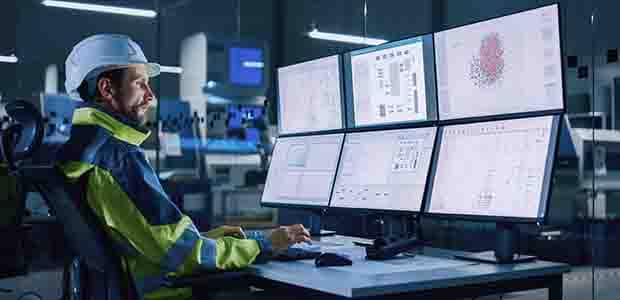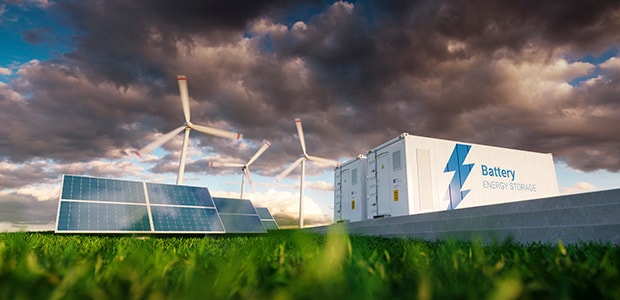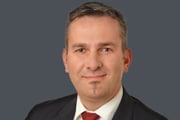TE Perspectives
Readying the Grid for Electrification
Author: Christoph Lederle, Ph.D., Industry Expert in Energy Technology
The world is becoming increasingly electrified. As a result, electric alternatives are quickly gaining market share for nearly every process or piece of equipment that currently runs on another energy source.
Electric passenger cars and other electric transportation are replacing vehicles with internal combustion engines. Homeowners are moving away from oil and natural gas for their cooking and heating/cooling systems. Industrial automation and the rise of cobots are putting more electric equipment on factory floors.
This “Electrification of Everything” drives enormous demand for clean, reliable electricity. By 2030, projections show global energy demand will grow nearly 25%-30% to roughly 30,000 terawatt hours (TWh), according to the International Energy Agency. Projections indicate EVs alone will account for 1,100 TW of electricity usage by 2030, or about 4% of total electricity demand. That figure is equivalent to twice today’s total electricity use in Brazil[1].
Delivering the promise of worldwide electrification will require significant changes in our electricity grids. We must upgrade the current systems to become smarter, more sustainable, more reliable, and more resilient.
TE works closely with customers directly involved with the electrification of everything – from EV manufacturers and other e-mobility specialists to companies across the energy sector. Based on that experience, we’ve identified four critical changes needed to create the electrical grids of the future.

Increasing Renewable Energy Capacity
The world’s energy system faces two competing challenges: How to meet growing electricity demand while simultaneously pursuing ambitious goals to reduce carbon emissions. Replacing fossil-fuel-based generation with renewable energy sources can help meet both of those priorities, but it’s not a simple one-for-one tradeoff.
Renewable energy sources such as wind and solar don’t provide the same steady flow of electricity as traditional steam generators or nuclear plants. Instead, conditions like wind speed and sunlight exposure determine how much electricity renewable sources generate, leaving grids susceptible to shortfalls when conditions aren’t favorable. In fact, a nuclear power plant produces four to seven times the amount of energy as a solar farm with the same installed capacity.
To provide enough power to meet peak electricity demand, grid owners must substantially increase the installed capacity of renewables—and quickly. Building this capacity will require solutions that make it easy to configure renewable generation facilities and connect them to the existing infrastructure. Still, the need for additional investments extends across the network.
Grid owners must build more substations and distribution and transmission lines to reach locations where they’ve added renewable capacity while upgrading other pieces of equipment. For example, incorporating renewable energy requires modern transformers that automatically regulate to adjust the voltage to different levels based on the energy source versus traditional transformers that adjust voltage up or down based on fixed ratios.
Stabilizing Power Grids with Advanced Monitoring and Control Systems
Increasing the installed capacity of renewables will change the nature of electrical generation – moving from a centralized, one-directional system to a more decentralized and dynamic one. In response, utilities need advanced monitoring and control systems to optimize grid performance.
Emerging challenges include easily moving excess electricity from one location to another to balance out supply and demand. And with more end users installing solar panels on homes and businesses, managing bi-directional energy flow becomes an even bigger task.
In addition to these real-time requirements, grid operators need advanced systems to help manage longer-term performance issues. Traditionally, utilities operated their grids at load levels of about 60% to extend the lifetime of their infrastructure. Now, variable wind and sun conditions are creating greater electricity generation fluctuations that stress the grids and often require them to operate at higher loads. These increased loads can lead to more maintenance and shorter equipment lifespans.
To help utilities manage the stress of higher loads, we anticipate a rapid evolution in smart grids. Smarter grids allow expanded data collection capabilities, including additional voltage, current and temperature sensors to monitor grid health. Feeding this data into a central collection point gives operators more visibility into conditions across their network. Supported by advancements in automated switching capabilities and artificial intelligence will help grids to self-regulate their power flow.

Easier Installation and Improved Reliability
Durability has always been essential for electric infrastructure components operating in harsh weather conditions, especially when considering highly vulnerable connection points. The industry is stepping up to meet new requirements to withstand the anticipated stress of variable energy loads, the constant vibration of wind turbines, extreme offshore conditions and more.
For example, we have designed new connectors for the latest generation of 15-MW wind turbines and are working on connectors to meet the specifications of next-generation, 20-MW turbines, using lessons we have learned over the past three decades.
Another goal for TE is making the installation of renewable energy projects easier, safer, and more reliable. For example, our separable connectors for offshore wind farms allow a single person to complete connections on a turbine. We also offer training services to educate installers and cable jointers on techniques that enable accurate and safe installations because properly installing equipment from the start is essential for long-term grid reliability.

Developing Storage Capacity to Ensure the Availability of Electricity
Of all the enhancements required to prepare grids for the electrification of everything, one of the most important is the need for widespread, reliable energy storage. Energy storage was a secondary priority in the past, when utilities could easily turn on or off fossil-fuel-powered generators based on demand. However, the variable output from renewable energy sources requires ways to store excess energy when conditions are favorable and then make that energy available when demand outstrips current supply.
The utility industry is exploring a range of storage technologies, including systems that use excess electricity to pump water into holding areas and then release that water to power hydroelectric turbines when needed. Similarly, air-powered systems use excess electricity to compress and store air that can be used later to turn turbines. Advancements in battery technology will also allow greater use of battery storage systems that can be charged by renewables when conditions are ideal.
Ultimately, hydrogen is a strong candidate for sustainable, long-term energy storage. Excess electricity can be used to create hydrogen, which utility operators can store and use when output from renewable energy sources is low. The process is already proven, but the current lack of efficiency in producing hydrogen from excess electricity limits its commercial viability. However, once global electricity grids are producing far more energy than needed to meet current demand—and generating that electricity from renewable sources—green hydrogen conversion can be an important component in solving the world’s energy problems.
Insights on Innovation in Technology
Collaboration will Accelerate Grid Transformation
These changes are already happening now, but we believe the pace of innovation must accelerate to keep up with the growing demand driven by the electrification of everything. Moreover, advancements can’t be limited to one area and must be developed simultaneously around generation capacity, substations, wiring, connectors, sensors, monitoring systems and storage technologies.
Collaboration across the energy landscape is the key to successfully transforming the electrical grid. TE will play its part by working with its customers to help integrate more renewable power generation into their networks and make other improvements that ensure the next generation of electricity infrastructure is smart, safer, secure, sustainable, stable and durable.
About the Author

Christoph Lederle
Dr. Christoph Lederle is an Industry Expert in Energy Technology. For 14 years, he held several leadership positions across TE. Prior to TE, Christoph worked as a scientist and lecturer at the Technical University of Munich, from which he obtained his doctorate in high voltage engineering.
More Stories on Tech Innovation
Citations
[1] https://www.iea.org/reports/global-ev-outlook-2022/executive-summary

 e
e
 e
e
 e
e


